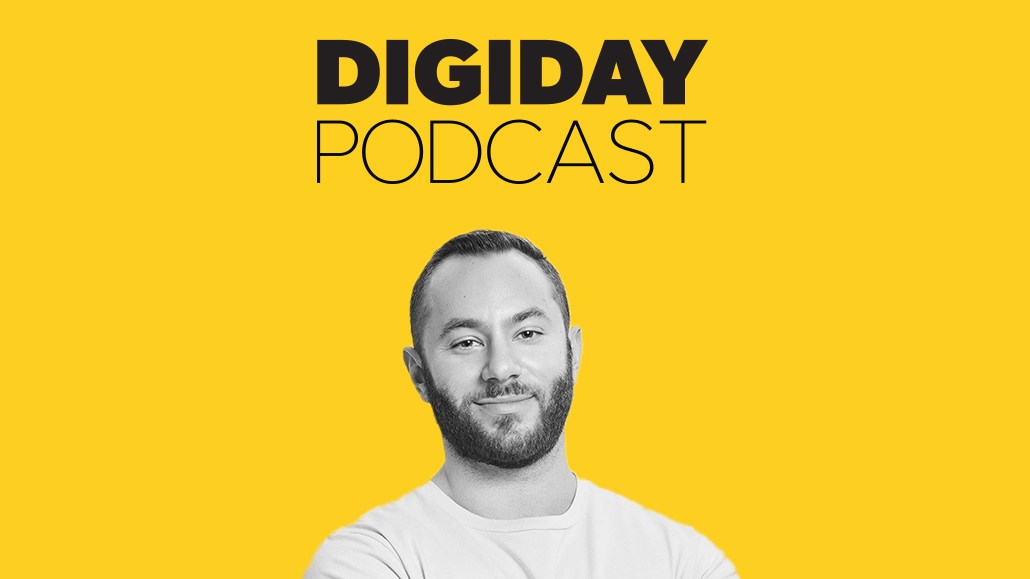Save 50% on a 3-month Digiday+ membership. Ends Dec 5.
Magic Spoon co-founder Gabi Lewis talks cereal brand’s expanded retail footprint and marketing strategy

Subscribe: Apple Podcasts • Spotify
Magic Spoon, the cereal company that launched entirely online back in 2019, has since expanded its footprint to more than 16,000 national retailers to meet shoppers where they are, whether that’s online or in-store.
Historically, the cereal company built its millennial and Gen Z following via short-form social media videos, podcasts alongside other direct-to-consumer brands. But as its retail footprint expands, so does its ad strategy, to include things like in-store aisle displays. On this episode of the Digiday Podcast, we caught up with Gabi Lewis, co-founder at Magic Spoon, to talk about the brand’s expanded retail footprint, standing out in a crowded category and of course, the measurement woes plaguing marketers.
Below are highlights from the conversation, which have been lightly edited and condensed for clarity.
How a DTC strategy translates to IRL
It’s definitely the same philosophy. We’re still a relatively young brand. We still don’t have the kinds of budgets to spend on huge branded campaigns that have questionable or hard to measure ROI. In the early days, we were very direct response focused. We invested very heavily in things like podcasts, even linear TV, but measured that in terms of its CAC (customer acquisition costs), views, conversion, things like that. We’re taking the same mindset to now additional channels. There’s a bunch of levers at our disposal now that we’re in retail that weren’t available previously. That’s everything from a floor talker in a Kroger store in the protein bar aisle that says, “Go around the corner and discover high-protein cereal with Magic Spoon” all the way to using Instacart and things like that. Then, also leveraging our DTC expertise to pull these online levers to drive offline velocity. So it’s similar tactics, similar mindset, but a slightly broader menu of tactics, and also using them for offline as well as just online.
Measurement woes
Ad position: web_incontent_pos1
It’s hard when you’re 100% DTC today to carefully measure everything that matters. It’s infinitely harder when you’re an omnichannel brand. Even just questions as simple as: What is the halo effect of our paid social spend on our retail footprint, in theory are easy to measure. But the results are quite hard to interpret, especially when your retail footprint is growing so quickly and you’re in lots of different geographies. It’s not the easiest thing to measure. We’re getting smarter and smarter on it … We don’t have great answers, yet. We have directional answers that give us confidence to continue investing in the tactics we’ve been investing in, but nothing that is as conclusive as I might like it to be, or any marketer would like it to be.
Standing out on social media
Organic definitely doesn’t get as much attention as it deserves. But increasingly, as paid becomes harder and harder, it will. We try to post content that is either educational, fun or entertaining. Sometimes, our content ends up just being a picture of a pretty box. That might stop someone’s scrolling. We do take advantage of the fact that our packaging looks beautiful. We can’t really take any of the credit because there is a huge history of old school cereal companies really being amazing at marketing and creating iconic characters that everybody still knows about. What we’ve done is really just tried to upgrade that a little bit for the modern consumer.
More in Podcasts

WPP’s turbulent 2025: Inside the reorgs, financial woes, and new leadership under Cindy Rose
WPP’s 2025 was marked by financial woes and a new CEO, Cindy Rose, as the holdco eyes 2026 with its new AI platform.

How Black Friday and Cyber Monday could ‘fast track’ OpenAI’s ad plan
OpenAI seems to be wading into advertising. Digiday breaks down the prerequisites for its ad business and why this year’s Black Friday could fast-track its ultimate roadmap.

The ‘hot dog vs. sandwich’ problem in AI advertising
The AI agents have come for programmatic advertising. And like AI’s invasion everywhere else, guardrails are needed, as Digiday editors discussed on this episode of the Digiday Podcast.
Ad position: web_bfu





